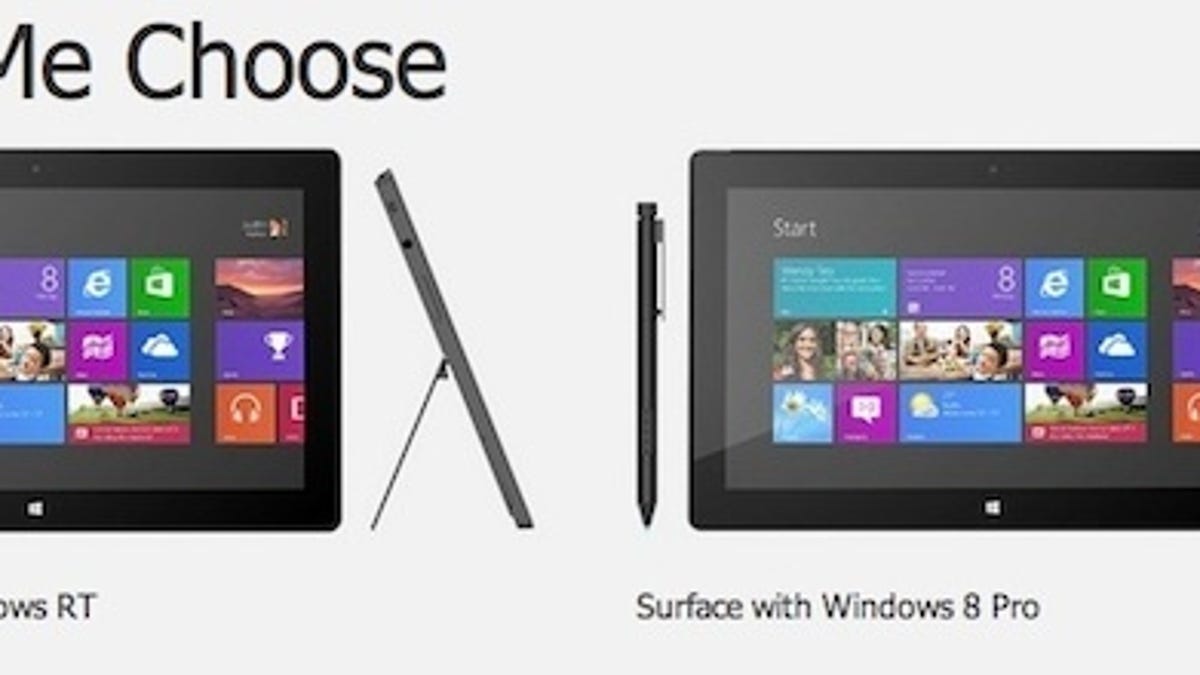Microsoft training staff to explain Windows 8 versus RT
The software giant is getting sales employees up-to-speed on the differences between Windows RT and the fuller, backward-compatible version of Windows 8. It remains to be seen if the message reaches customers.

Microsoft is training sales staff to make sure customers know the difference between Windows RT and the full version of Windows 8, the company told CNET.
Windows RT tablets, including Microsoft's Surface, use power-frugal ARM chips and come with a version of Windows 8 that is not compatible with older Windows software. Windows 8 and Windows 8 Pro devices -- including an upcoming higher-performance Surface tablet -- are powered by Intel chips and can run the millions of older Windows programs already out there.
"Compatibility is a huge, huge issue," said Bob O'Donnell, an analyst at IDC. "They need to be clear on how [RT] differs from x86 tablets," according to O'Donnell, who added that a lot of consumers will be oblivious to the differences and expect RT to run older Windows software. Intel-based devices are often referred to by the shorthand of x86.
Here's the statement Microsoft provided to CNET:
We are working to ensure our store teams provide a great experience to our customers purchasing Surface or a new Windows 8 PC.
We are not yet selling Surface, Windows 8 or Windows RT devices in our stores -- by GA (General Availability) on 10/26, all team members will be fully trained on helping customers know which choice is right for them.
We will be training our team members to ask qualifying questions to help determine their customers' needs and the best products to fill those needs and recommend the right device and by GA, store associates on average will have completed more than 15 hours of training on Windows and Surface.
And to be fair, Microsoft does touch on the differences via a new Surface Web page titled "Help Me Choose."
Under "Operating System" the page says "Windows RT is an exciting new version of Microsoft Windows that is built to run on ARM-based tablets and PCs. Works exclusively with apps available in the Windows Store."
And for the Intel-based Surface, the page says: "Runs current Windows 7 desktop applications and integrates with your existing enterprise management infrastructure. Use the programs and the apps available in the Windows Store."
But those messages need to reach salespeople at Microsoft Stores and online. "The two devices are going to be virtually identical, but the two chips inside determine which software actually works with it -- or not," said O'Donnell.
And that results in a complicated marketing message. "That's a pretty hard message to sell because you have to sell one against the other. [For RT, Microsoft is saying] 'you don't need compatibility because it's all fresh and new.' But then to sell x86, 'of course you need compatibility,'" he said.
The net result of all of this is that some consumers will buy the Surface RT tablet thinking it can run all of the older Windows software and "returns go through the roof," said O'Donnell.
Of course, that's just speculation at this stage, but the initial wave of Android tablets faced similar problems when less-tech-savvy consumers at outlets like Staples bought Android tablets expecting to run a wide variety of software and apps, but couldn't -- and returned the devices.

